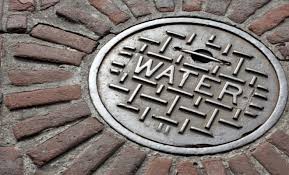
On Sept. 27, New York Gov. Kathy Hochul announced $90 million worth of state grant money to be put towards combating the lead crisis in New York State. An additional $1 million has been granted as part of the Bipartisan Infrastructure Law (BIL) in effort to aid smaller communities, such as New Paltz, in identifying and eradicating lead from water systems throughout the town.
The BIL works to ensure clean, lead-free water infrastructure in communities across the country. Both the Clean Water State Revolving Fund (CWSRF) and the Drinking Water State Revolving Fund (DWSRF) are programs within the BIL that work specifically in NYS to confront water pollution and contamination.
Various factors arise when considering the cause of lead detection in drinking water. Most commonly, lead leeches into water once pipes containing lead start to corrode. The New York State Department of Health states, “Homes built before 1986 are more likely to have lead pipes, fixtures and solder. Homes built after 1986 have ‘lead-free’ plumbing, but still can contain trace amounts of lead that can dissolve in water.” Though trace amounts of exposure can go unnoticed in adults, no amount of lead is safe for children to consume. Over the course of the last two decades, lead poisoning has become a concern for the adolescent population.
When a child comes into continuous contact with lead throughout their life, the likelihood of experiencing developmental issues increases. The NYS Department of Health warns parents, “Lead can harm a young child’s growth, behavior, and ability to learn. It can also cause anemia, kidney damage and hearing loss.” Still, with the plethora of information available today, the underlying effects correlated with lead exposure have still yet to be explored in their entirety.
Until recent years, for a child’s blood lead level (BLL) to be concerning, it would need to exceed 10µg/dL, which is a unit of measure which reflects the concentration of lead in the bloodstream. The concentration has now been reduced to 5µg/dL, as it is becoming increasingly prevalent that virtually no amount of lead in the bloodstream may be construed as sustainable to a developing human. In 2013, The Center for Disease Control and Prevention (CDC) investigated data collected from 2007-2010 concerning the number of children, ages 1-5, whose BLL presented as above 5µg/dL. Their findings displayed a sizeable 2.6%, equating to 535,000 children across the United States. Though this data reflects statistics retrieved a near decade ago, the margin of children affected has only slightly decreased. Collectively, this emergency then begins to emphasize craters of disparity that exist between communities.
In May 2021, a study was released by the National Library of Medicine, examining similar data to the CDC. Rather than simply inspecting the BLL of children under five years of age, the study looked at how BLL fluctuates and differs between individuals of a certain race or ethnicity. Though lead exposure in children has decreased within the past decade, there continues to be a far higher concentration of non-Hispanic Black individuals affected. The study concludes, “At the national level, young Black children who are predominantly African-American continue to present with the highest average BLLs and rates of an EBLL ≥5 µg/dL compared to their White or Hispanic peers.” This statistic reflects a noticeable discrepancy between predominantly non-Hispanic Black and non-Hispanic white communities.
Regardless, children across the country continue to live and grow with the risk of being exposed to lead and potentially experiencing detrimental affects as a result.
For the community of New Paltz, which is home to public schools and a state university, lead is a concern. While the town’s Annual Drinking Water Quality Report for 2021 reported no contamination, this information is misleading to the public when it comes to the presence of lead. The culprit lies not within the water itself, but rather the system’s infrastructure.
There are many projects underway, working to provide aid to members of the community who are at higher risk of being exposed to lead. For example, the Free Lead Testing Pilot Program supplies all in-state residents with the opportunity to have their drinking water tested at no cost; whether that be from private well water or from the public reserve. While the money granted by the BIL has yet to be utilized, Town Supervisor Amanda Gotto explained the town’s intentions.
“We did receive a grant to do a lead line survey in the water delivery system that the town is responsible for, and we have a consultant who’s doing that analysis to find out exactly which pipes might have lead in them…that’s the first step, to identify the pipes that might have lead in their delivery lines, and so that is underway.” said Gotto.
As part of the BIL’s promise to provide aid to populations experiencing water contamination, lead detection services are to be provided with the hope that the community of New Paltz might take the advantage in the fight against lead poisoning.
While this is an issue that has grown for a long time and has affected many, it seems the town of New Paltz is forging a path to newer, safer water infrastructure. While speaking with Gotto, she ensured the town is hopeful for the future as they combat the lead presence.
“The idea is to make sure that our citizens are getting good, safe water.”
